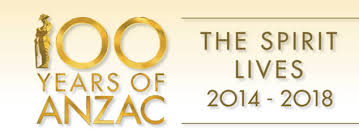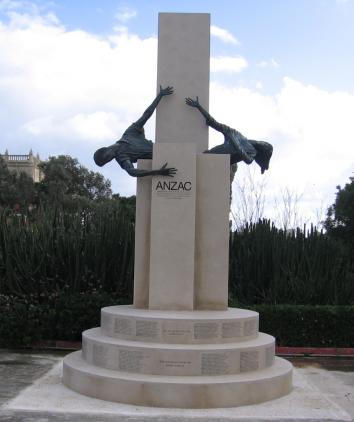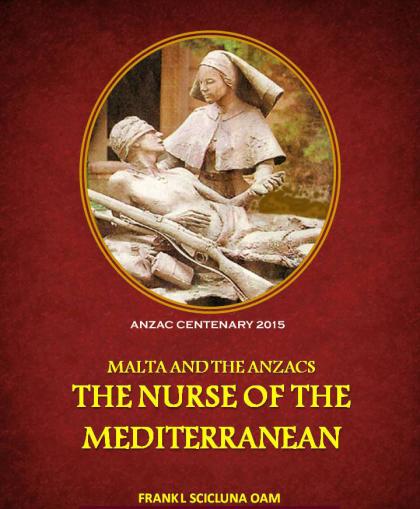
MALTA
THE NURSE OF THE MEDITERRANEAN
ANZAC CENTENARY 1915 - 2015
Between 2014and 2018, Australia and New Zealand commemorate the Anzac Centenary, marking100 years since the nations’ involvement in the First World War. TheFirst World War was one of the most significant events of the 20thCentury, claiming the lives of more than 16 million people across the globe.
Even now, 100 year on, we are allconnected to the Anzac Centenary through our own family history, the heritage ofour local communities or the lasting impact it left on generations ofAustralians and New Zealanders.
From the Declaration of War, to thevarious bloody battles and surrenders, and finally to the armistice and theglobal impact left in its wake, every detail has been recorded in hundreds, ifnot thousands, of books.
This publication, Malta, the Nurse of the Mediterranean, is a compelling account ofMalta’s involvement in World War I and the relationship with the ANZACS.
Even the little island of Malta, in themiddle of the Mediterranean Sea, played an important part during the FirstWorld War so much so that it earned the title of The Nurse of theMediterranean.
On 25 April1915, the Australian and New Zealand Army Corps (Anzacs) commenced their campaignto capture the Gallipoli Peninsula. This campaign is often considered the birthof national consciousness in both countries. It consisted of submarineincursions into the heavily mined Sea of Marmara at the entrance to the BlackSea and was the naval bombardment of the fortifications at the narrow entranceto the Sea of Marmara and the landing of troops and land warfare.
The heavy losses prompted the Allies to cease any further attempts totake the straits by naval power alone leading to the third phase. WWI wasmarked by large forces engaged in static trench warfare that sustained manycasualties. Gallipoli was no exception. About 480,000 allied troops took partin the campaign.
They endured nearly 290,000 casualties including 59,000 dead. Turkishcasualties are estimated at 250,000 with 65,000 deaths. The Anzacs suffered2,000 killed on the first day. One of the first to be killed was PrivateCharles Bonavia, a Maltese migrant who joined the Australian 11th Battalion inPerth. At least six other Maltese were killed in action serving with theAustralians and a much higher number serving with British contingents.
The number of Maltese serving with the Australian isunknown although we found that about 22 served with the Anzacs but the exactnumber is not known because not all records have been preserved, of theanglicising of Maltese names, and some served under assumed names.


The British War Office did not allow the Maltese to raise their own battalion so they had no choice but to serve in other battalions. Piecingtogether all the information is difficult, but it has been established that 85Maltese officers served in various fields with six receiving distinctions for bravery at Gallipoli. Some 650 Maltese served with the British navy and over300 with Canadian and Australian Army contingents.
In January 1915, 550 men of the King’s Own Malta Royal Militiavolunteered for active duty in Cyprus, freeing the troops stationed there to join the Dardanelles campaign. The overall contribution of the Maltese can begauged by the fact that nearly 70 per cent of males who were of military agewere directly involved in the war.
A little known fact about the Gallipoli campaign is the Maltese LabourCorps. This consisted of 1,000 workers under the direction of Maltese officers who unloaded ships and performed other activities at Anzac Cove. Most of theprovisions for the 24,000 men in Anzac Cover came from Malta, including thewater that was towed in water barges. Men of the Maltese Labour Corps worked inthe leeway of a hill with enemy fire landing either short or sailing overhead into the sea. Remarkably, only one was killed and two slightly wounded. Two ofthe Officers later served as Maltese Commissioners to Australia.
Malta was declared a military hospital base in early 1915 and within ashort time was in a position to cater for 20,000 wounded ANZAC soldiers. A large number of public buildings, including schools, were converted to hospitaluse. In all, 27 hospitals were established. The convalescent camp at GhajnTuffieha, which had over 4,000 beds, was one of two tent cities catering forthe wounded.
The first 600 wounded arrived in May 1915 and by March of the following year the Governor estimated that over 60,000 wounded had been cared for. It is estimated that the hospitals and convalescent camps dealt with over 135,000 sick and wounded, primarily from thecampaigns in Gallipoli and Salonika. This included 20,000 Anzacs.
While the vast majority of Anzacs transported to Malta did recover and returned to Australia or to the European Front, for others Malta was theirfinal resting place. The number of Australian deaths would have undoubtedlybeen higher but for the work of Maltese doctors who served with the Anzacs.
The “low percentage of sickness among the troops of this Division is largely attributable to the work of a Maltese physician. In the first four months ofthe campaign, the dressing station at Anzac Cove treated over 15,000 wounded. DrMattei had migrated to Western Australia in the 1890s. He served with theWestern Australian contingent in the Boer War as well as with the Anzacs. Helanded in Gallipoli with one of the first waves and immediately established a sanitation station at Anzac Cove. He was rapidly promoted to major and then lieutenant colonel. In the first four months of the campaign, the dressingstation at Anzac Cove treated over 15,000 wounded.
On 15 April 1916, the first Anzac Day was commemorated in Malta at the PietaCemetery, possibly the first Anzac ceremony in the world. At that time therewere 107 Anzacs laid to rest in the cemetery. The number had increased to 204Australians and 72 New Zealanders by the end of the campaign. It increased further as the result of WWII and today about 220 Australians are buried on theisland. An ANZAC memorial was erected in 2013 at the Botanical Gardens in Floriana, Malta in honour of the 300 ANZACSwho succumbed to their injuries after reaching Malta and lie buried on theisland.
Under the auspices of the RSL Maltese Sub-branch of SA, Frank L SciclunaOAM published a commemorative book MALTA AND THE ANZACS – THE NURSE OF THEMEDITERRANEAN to coincide with the ANZAC Centenary 2015. This book commemoratesthe invaluable and lasting friendship that exists between the people ofAustralia, New Zealand and Malta formed during the Gallipoli campaign in 1915. it is a lasting tribute to our shared wartimehistory, the stories of those who served and the close relationship of our countries,which continues today.
